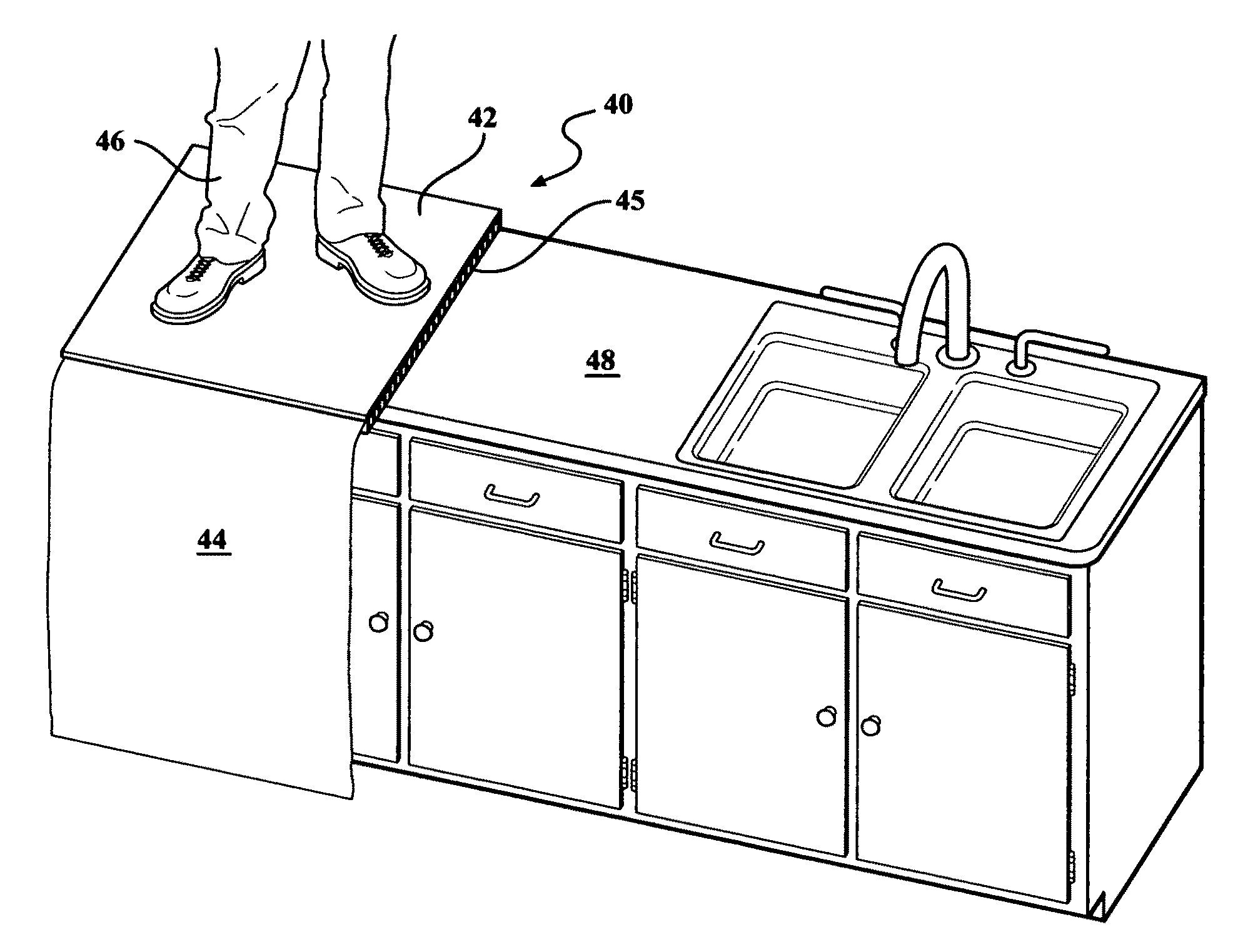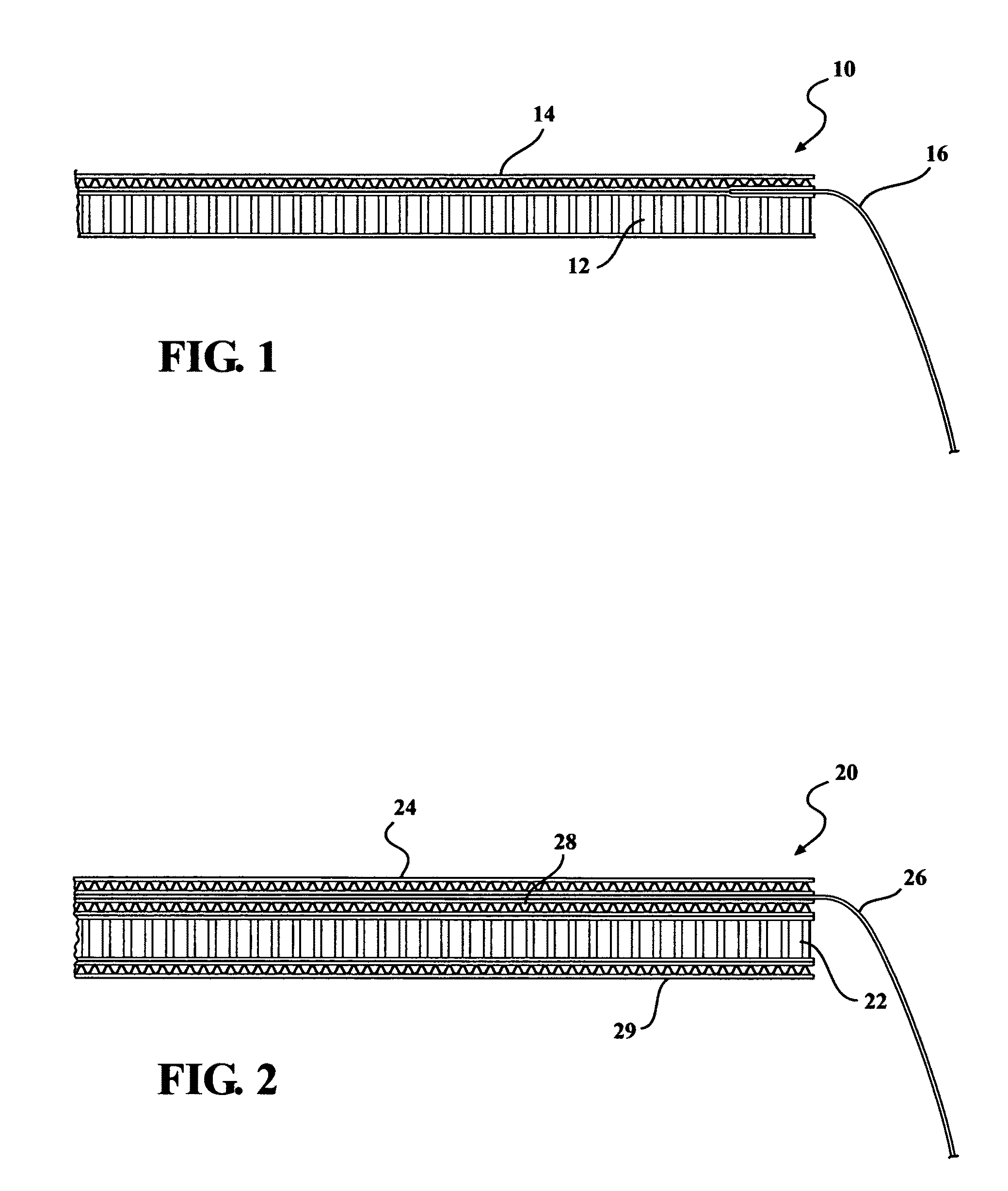Protective coverings
a protective covering and cabinet technology, applied in the field of protective coverings, can solve the problems of unfavorable construction scheduling and processing, unnecessary delays, and problems between builders and homebuyers, and achieve the effect of protecting delicate finishes
- Summary
- Abstract
- Description
- Claims
- Application Information
AI Technical Summary
Benefits of technology
Problems solved by technology
Method used
Image
Examples
Embodiment Construction
[0041]Looking first to FIG. 1, there is a side elevational cutaway view of a first embodiment of a construction site protective covering made in accordance with the present invention, generally denoted by numeral 10, which is made of a corrugated honeycomb cardboard underlayment 12, and having adhered thereto a corrugated cardboard piece 14. A sheet of plastic 16 may be adhered between the corrugated honeycomb underlayment 12 and the corrugated cardboard piece 14. The inventors have discovered that the combination of the honeycomb underlayment 12 with an adhered upper layer of corrugated cardboard 14 yields a very desirable protective covering, which they sell under their trade name, CORHEX™. CORHEX™ may or may not include an optional plastic sheet 16 as illustrated in FIG. 1. The CORHEX™ material is the basis for most of the construction protective coverings, and may include optional plastic sheets or additional corrugated pieces either on the top or the bottom, and may also includ...
PUM
| Property | Measurement | Unit |
|---|---|---|
| thick | aaaaa | aaaaa |
| weight | aaaaa | aaaaa |
| weight | aaaaa | aaaaa |
Abstract
Description
Claims
Application Information
 Login to View More
Login to View More - R&D
- Intellectual Property
- Life Sciences
- Materials
- Tech Scout
- Unparalleled Data Quality
- Higher Quality Content
- 60% Fewer Hallucinations
Browse by: Latest US Patents, China's latest patents, Technical Efficacy Thesaurus, Application Domain, Technology Topic, Popular Technical Reports.
© 2025 PatSnap. All rights reserved.Legal|Privacy policy|Modern Slavery Act Transparency Statement|Sitemap|About US| Contact US: help@patsnap.com



